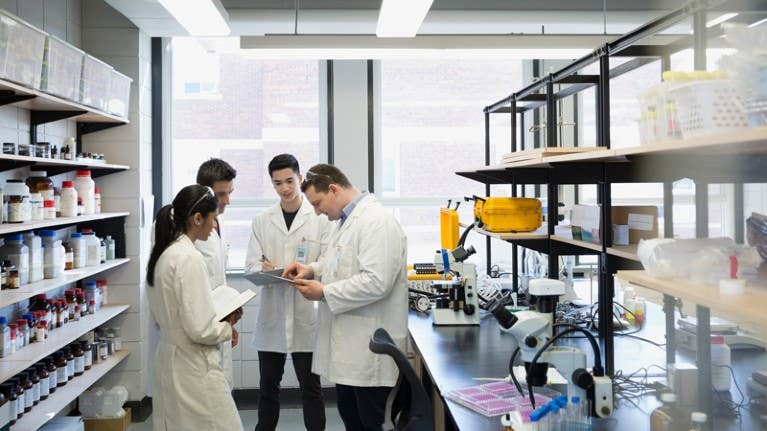Loading...
Checkout using your account
Checkout as a new customer
Creating an account has many benefits:
- See order and shipping status
- Track order history
- Check out faster
Checkout using your account
Checkout as a new customer
Creating an account has many benefits:

The preeminent research institution in Australia houses the country's most notable research landmark and national infrastructure. It leverages cutting-edge science and technologies to tackle intricate problems and promote human health, environmental well-being, and industrial progress. Through a research and development (R&D) approach, the institute employs sophisticated technologies to analyze the smallest molecular details. Consequently, it generates and stores vast amounts of data that necessitate high-performance infrastructure.
DiGiCOR worked with the Scientific Computing Specialist at the Australian Research Institute, who on the organisation’s behalf, proposed the Greenfield project to DiGiCOR. In collaboration with our network of vendors and partners, we were able to negotiate and create a streamlined solution that first and foremost satisfied all their technical, budgetary and reliability requirements and expectations.


Australian Research Institute required a full turnkey solution that could operate their newly adopted science instruments related to their Greenfield project during the growth period of the Synchrotron.
This type of project required general high-performance computing and storage to handle:
Ron Bosworth, a Scientific Computing Specialist from the Australian Research Institute and the research organisation had a clear set of technical specifications and budgetary limitations comparable with other vendors in the market.
A full turnkey solution that could operate the Australian Research Institute’s new science instruments
Workloads: able to run and store virtual machines, cache analysis, handling live scientific data and bursts of data, and analysis of data through an HPC system.
Fulfil the technical specifications and budgetary limitations compared with other vendors in the market


Collaborating closely with Bosworth and affiliated project members from the Australian Research Institute, we engaged our network of vendors to devise a solution that not only addressed the organization's challenges and requirements but also outperformed competitors in the market.
This solution was a testament to the evolving relationship built over years of delivering reliable and effective solutions and services to the Australian Research Institute. Consequently, we gained a deeper understanding of the project's fundamental challenges and needs, enabling us to educate the organization on the latest cutting-edge technologies and present our best, simplified, and vertically integrated solution options.
Based on the:
Intel Server R2000WF Family (Formerly Wolf Pass):
The purpose of (3) Intel 2U R2224WFTZSR server systems powered by Intel Xeon Scalable in this project is to establish high performance storage in running the required virtual machines, and performing cache analysis.
Supermicro Back-up Server:
The purpose of the Supermicro 1U SuperServer 1114S-WTRT powered by AMD EPYC in this project is to deliver fast and efficient data transfers for the backing up of scientific data.
The purpose of the Seagate 4U J12C6XA16900DA JBOD with 1.69PB 106 bays in this project is to effectively and speedily handle live scientific data capture with bursts of data and analyse the data within a HPC system.
By engaging our trusted partners and vendors in discussions regarding the situation and competitive landscape, the Australian Research Institute gained significant advantages over competitors in terms of pricing and services.
Consequently, we were able to offer alternative solutions and options that deviated from the initial proposal from the Australian Research Institute, providing solutions that were not only more cost-effective but also highly reliable. Our approach involved integrating all components, finely tuning them, and streamlining the solution with brands such as Intel, Supermicro, and Seagate.
Given the Greenfield nature of the project, meeting the objective of establishing high storage for virtual machines, analysis, and data capture was straightforward due to the close collaboration between our expert presales and sales teams and our vendors. The solution not only met but exceeded the impact and performance expectations of the Australian Research Institute, as stated by Bosworth.
Throughout the engagement phase between DiGiCOR and the Australian Research Institute, Bosworth provided positive feedback, acknowledging the provision of "interesting" solutions and options tailored to the Institute's requirements. This was complemented by the speed and effectiveness with which we addressed the problem, as well as regular updates on delivery progress and expected time frames.


